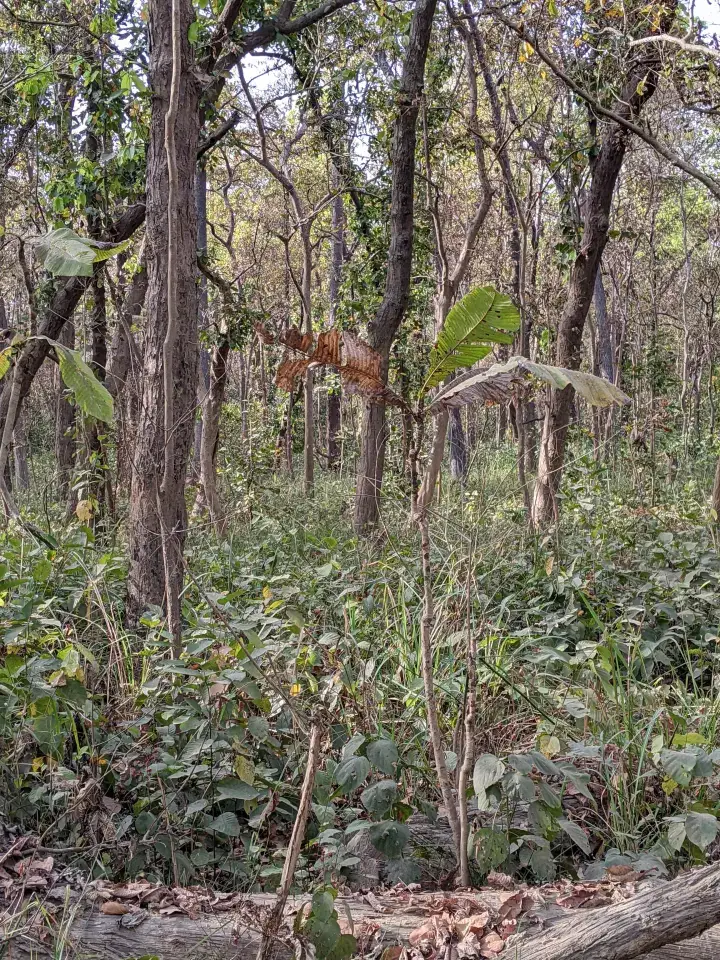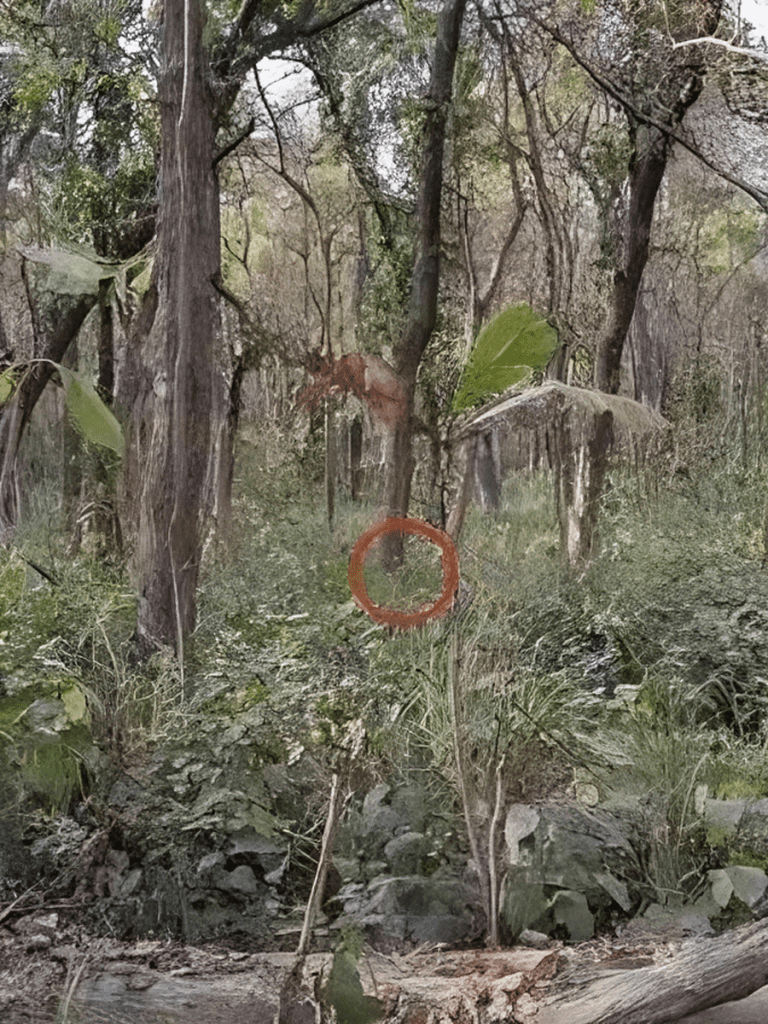In the ever-evolving world of viral challenges, a new cognitive puzzle is captivating the internet. A seemingly ordinary jungle photo has gone viral, with people from all over the globe testing their observational skills. The challenge? Spot a tiger cleverly concealed within a dense jungle scene in just 12 seconds. Those who can quickly locate the hidden predator are said to have a high IQ, a claim that has only fueled the challenge’s popularity.

But why has this particular image gained such traction? What makes it so difficult, and what does it say about your cognitive abilities if you can solve it quickly? Let’s dive into the details of this intriguing visual puzzle.
At first glance, the image looks like a typical, tranquil jungle scene. Lush greenery, tall trees, and thick underbrush dominate the picture. However, hidden within this dense foliage is a tiger, perfectly camouflaged against its surroundings. The challenge is deceptively simple: find the tiger in 12 seconds or less.
This time constraint is what adds an extra layer of difficulty. While the tiger is indeed in the image, it’s not immediately apparent. Your brain has to process a lot of visual information very quickly, filtering out the irrelevant details to focus on finding the hidden animal.
So, why is this challenge so tricky? The answer lies in how our brains process visual information. When you look at an image, your brain uses a combination of prior knowledge, pattern recognition, and selective attention to interpret what you see. In this jungle photo, the tiger’s natural camouflage plays a crucial role in misleading your brain.
- Camouflage and Pattern Recognition: The tiger’s stripes blend seamlessly with the jungle’s vertical lines, such as tree trunks and shadows. This camouflage makes it difficult for your brain to distinguish the tiger from the background, especially under time pressure.
- Selective Attention: When given only 12 seconds, your brain has to quickly decide where to focus. Often, it’s drawn to the most prominent or colorful elements in the image, which might not be where the tiger is hiding. This can lead to frustration as the seconds tick by without spotting the elusive animal.
If you manage to spot the tiger within the allotted 12 seconds, congratulations—you might have a sharp eye and quick cognitive processing skills. But what does this really mean? Does it truly indicate a high IQ, or is there more to it?
- Perceptual Abilities: Successfully finding the tiger quickly suggests that you have strong perceptual abilities. Your brain is efficient at filtering out unnecessary details and focusing on what matters, a skill that’s valuable in many aspects of life, from problem-solving to navigating complex environments.
- Cognitive Flexibility: The ability to switch your focus rapidly and identify patterns in a cluttered scene indicates cognitive flexibility. This skill is often associated with higher IQ and better performance in tasks that require quick thinking and adaptability.
However, it’s important to note that while this challenge is a fun way to test your observational skills, it’s not a definitive measure of intelligence. Different people excel in different types of cognitive tasks, and being good at spotting a hidden tiger doesn’t necessarily mean you’ll excel in other areas.

As with many viral challenges, the internet’s reaction to this jungle photo has been enthusiastic and varied. Social media platforms are buzzing with users sharing their experiences, boasting about their quick successes or lamenting their struggles.
- Speedy Successes: Some users have claimed to spot the tiger in just a few seconds, proudly sharing their results. Comments like “Got it in 7 seconds!” and “Spotted it in 5!” are common, as people celebrate their perceived sharpness.
- Frustrated Attempts: On the flip side, many people have found the challenge more difficult than expected. Comments such as “I’ve been staring at this for 10 minutes and still can’t see it!” reflect the frustration of those whose brains are tricked by the tiger’s camouflage.
- Humorous Responses: The challenge has also sparked humor, with some users joking about their inability to find the tiger. One popular comment quips, “It’s hiding behind John Cena, right there!” playing on the idea that the tiger is so well-hidden, it might as well be invisible.
If you’ve been trying to find the tiger and are starting to feel frustrated, you’re not alone. The tiger’s location is expertly chosen to blend in with the jungle surroundings, making it a real challenge to spot. But don’t worry—I’m here to help.
To find the tiger, focus your attention below the central tree in the image. Look carefully among the greenery, and you should be able to make out the shape of the tiger crouching low, its stripes blending with the shadows and foliage. Once you see it, you’ll wonder how you ever missed it!

The popularity of this tiger-in-the-jungle challenge, like many other visual puzzles, taps into a few key psychological factors that make them so engaging:
- Instant Gratification: There’s a rush of satisfaction that comes from solving a puzzle quickly, especially when you know others have struggled with it. It’s a quick confidence boost that makes these challenges addictive.
- Social Validation: Sharing your success on social media and comparing your results with others adds a layer of social interaction to the challenge. Whether you’re the first to find the tiger or the last, participating in the trend makes you part of a larger community.
- Cognitive Engagement: These puzzles are also a great way to keep your brain active and engaged. They require focus, quick thinking, and attention to detail, all of which are good exercises for your cognitive abilities.
The tiger-in-the-jungle challenge is more than just a viral trend—it’s a fascinating exercise in cognitive perception and visual processing. Whether you found the tiger quickly or needed a bit more time, the challenge offers a fun way to test your observation skills and engage with others online.
So, did you spot the tiger? If you did, you can take pride in your sharp perceptual abilities. If not, don’t worry—keep practicing, and you’ll soon train your brain to spot hidden objects more easily. And remember, it’s all about the thrill of the challenge, not just the result.


